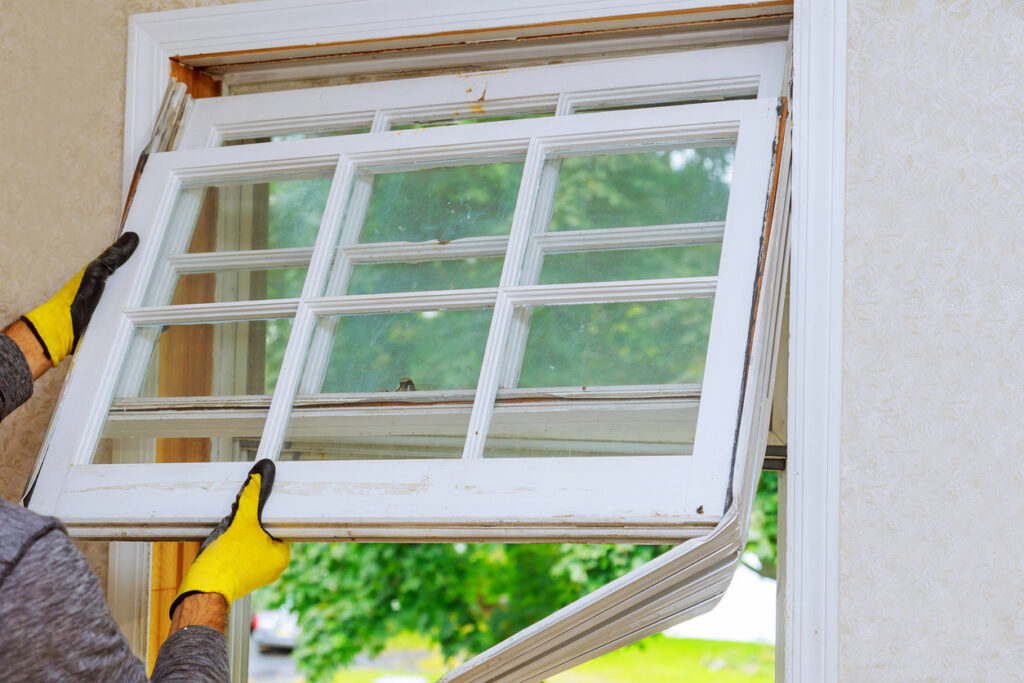If you’ve checked out our other articles, you know windows noticeably impact your home energy score. This is because your windows act as eyes to the outside world, allowing in potential drafts and sunlight. Depending on your window’s direction, they allow cold air out or in and let in heat. Think of your home’s windows as insulation weak points. Instead of presenting a unified insulated front to the outside world, windows allow sunlight and can be a source of drafts and external temperature bleed.
Of course, the amount of heat allowed into your home depends on the home’s construction, the type of window, and where you live. You will likely see homes designed to keep the heat out in Portland, Oregon, especially for the hot summer months. In colder climates, like New England, you’d likely see windows designed to let the heat in during the winter months and to highlight the limited sunlight during the cold, dreary season.
Here, our goal is to cover what parts of a window directly impact your home’s energy score and how the different window designs, sashes, and glass types all add up to either improve your home’s energy score or detract from your energy efficiency.
Window Components
When deciding the right types of windows for your home and how they impact your home energy score, there are a few things to keep in mind. First, your windows should have a U-factor rating. This rating determines the rate at which a window or skylight transmits non-solar heat flow. When discussing non-solar heat flow, we discuss how the window allows ambient heat to enter or leave your home. This is important as if you’re cooling your home, that ambient heat allowance can add up and drive down your energy efficiency, while the same can happen when you try to heat your home in the winter.
It’s worth noting that most U-factor ratings only consider the glass of a window, not the sash and other factors that can impact the ranking. You must look for the National Fenestration Rating Council (NFRC) U-factor ratings for this. Because the components of your window can all add up and help determine your window’s total U-factor, we will cover how each window component can impact overall energy ranking and how choosing different components can help with your overall energy ranking.
Window Frames and Sash
While you may think of your window frame and sash as a purely aesthetic decision, the material that makes up your window frame and surrounds it can have a distinct impact on the overall U-factor of said window. Some examples of different frame and sash materials include:
- Aluminum or metal
- Composite
- Fiberglass
- Vinyl
- Wood
Each of these materials has its upsides and downsides regarding the U-factor and overall energy efficiency. Aluminum or metal frames are quite popular for windows as the material is cheap, easy to use, and lighter to lift. However, this material is arguably the worst for your energy factor, as it allows much energy transfer from your window. Metal isn’t well known for insulating, and aluminum is a poor insulator.
Composite frames, on the other hand, are usually made from wooden materials, allowing them to be more insulating. While you might not think of fiberglass and vinyl as insulated materials, these windows have added insulation spaces, allowing for heat loss mediation during installation. This makes these materials a good choice for your energy ranking and overall home maintenance, as they’re less likely to decay than wooden frames.
Of course, wooden frames and sashes are a solid choice for your window. However, remember that this material is more prone to mold and breaks down faster than other components, leading to more upkeep as a trade for better insulation and a better U-factor.
How Windows Open
Once again, you might not consider how your windows open impacts their overall energy ranking. However, different windows have different leak chances depending on how they open (or if they open). For example, windows that do not open have downsides (such as lack of flexibility and cross breeze), but they also allow little to no air through them, meaning you don’t have to worry about wearing down seals and leaks during a lifetime of use.
Of course, as far as windows that open go, some designs are naturally better at reducing leaks than others. Single- and double-hung windows tend to lead to the most leaks, according to Energy.gov. Part of this leakage comes from the space between the windows, as in a double-hung window; if the center seal starts to come undone, you’re looking at a direct line of contact with the outside world.
Any window design where the window closes by pressing against the frame tends to have lower air leakage than other windows. For example, awning-style windows close by coming into contact with the frame to reduce the likelihood of leaks. Casement windows have a similar advantage, while sliding windows lead to more leaks for similar reasons to double-hung windows.
While you may not have that much control over your window type when you buy your home pre-built, it can make a world of difference in your home energy score, especially if you’re considering replacing windows. Considering how your windows open, you can improve your overall score and reduce heat or cooling losses over time.
Window Spacers and Gas Filling
Did you know many windows have several layers of glass? These layers are usually ½ inch thick and can be filled with different gasses to reduce energy transfer through the window itself. Not only does this improve your home energy score, but it can help block out harmful rays from the sun and even reduce fading on furniture over time.
These spaces are usually filled with argon since it is a cheap option for the given space. For thinner window spaces, like those with ¼ inch spacing, krypton may be used as it is an expensive gas that does well in smaller spaces. These gasses are odorless, colorless, and inert, providing no danger to your home or family.
These spacers are ingenious as they allow room for the gasses to expand and contract with temperature without putting undue strain on the glass itself. Plus, even though the gas is colorless, it can still successfully block the sun’s rays, keeping your home safer and more temperature-stable in the long run.
Window Glass Type and Glazing
Finally, an important component in your window’s u-factor is the glass or glazing used for the window. These glazes can help reduce radiation and heat transfer without significantly impacting the visible light entering your home. Some examples of different glazes as glass structures include:
- Insulated: By using more than one layer of glass and leaving a sealed space for air in between, these windows provide more insulation, leading to a better U-factor.
- Low-Emissivity Coatings: Also called low-e coatings, these windows are more expensive than their counterparts but include glazes that can reduce energy transfer by up to 50%. They can be specially crafted to control how much heat is allowed through the windows and visible light allowances.
- Spectrally Selective Coatings: These coatings control the amount of heat allowed through a window while still letting sunlight into the building. These windows are popular in high-heat locations like Oregon, where allowing sunlight through windows is important, but so is reducing the amount of heat transferred through the windows during the summer months.
Now that you know how windows can impact your home energy score, it’s time to schedule a home energy score appointment. Feel free to contact us to schedule your appointment today.

